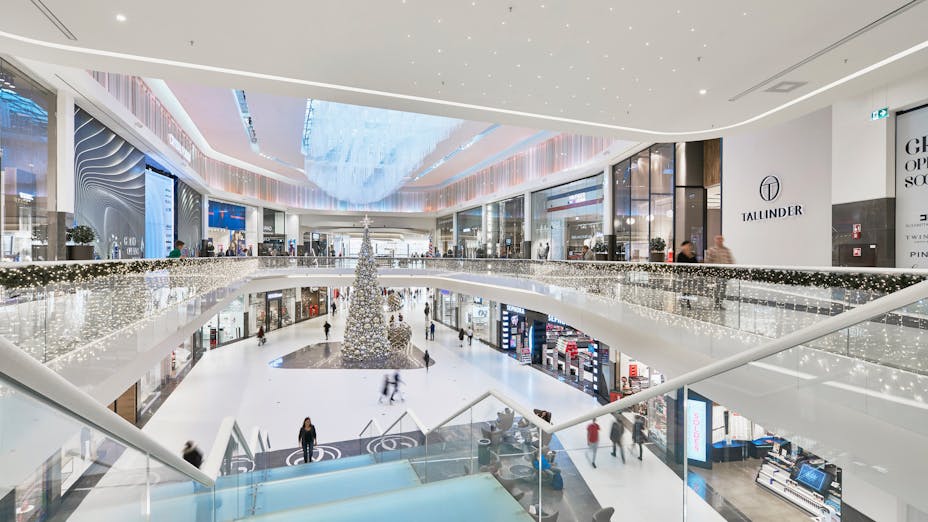It doesn’t really matter whether a shop is selling clothes, coffee, books, or gadgets — when customers step into a store, they just want to feel welcome.
This means that comfort and wellbeing are critical to shaping a desirable, multi-sensory shopping environment. Aspects such as lighting, indoor air quality, thermal comfort, and interior layout can all contribute to this, and have an impact on customers.
However, one particular factor that can go overlooked is the acoustics of a store.
Given their bustling nature, we know shopping malls to be noisy environments, and we would rarely give that a second thought. Although, sound actually forms an integral part of the retail experience.
“Most retail sound is inappropriate and accidental, even hostile, and it has a dramatic effect on sales,” explains Julian Treasure — sound and communication expert, and founder of The Sound Agency — as he reveals that bad retail soundscapes can lead to a 28 percent decrease in sales1.
After all, when experiencing dreadful sound in a store, a significant number of customers would be inclined to leave faster, or not even enter at all. This is vital to the performance of retail stores, as even an average increase of 1 percent in dwelling time can see sales rise by 1.3 percent2.
On the other hand, the revenue of retail shops can go up by 5-10 percent when the acoustic environment is optimised. In fact, a recent survey showed that 76 percent of respondents would dine out more often if the restaurants were more quiet3.
It’s crucial to note that a poor soundscape isn’t simply comprised of the type of music in the store, or the chatter of people in the vicinity. Other possible causes of unwanted noise can include sounds from pumps, fans, boilers, and more.
A space with bad acoustics would cause these unwanted sounds to reverberate. This means that when sound waves travelling through a space encounter a hard surface, part of that sound will be reflected back into the space itself4.
The quality of sound absorption and the interior atmosphere is heavily determined by the building materials used to design that space. Stone wool is by nature a highly sound-absorbent material, which enables the proper management of ambient sound pressure levels, creating the perfect balance of a buzzing space and a welcoming environment.
As retailers work towards finding success for their business, addressing the aural side of the customer experience will help lend a competitive edge and create a store that customers enjoying shopping in.
Source(s):
1. Treasure, Julian, 2009. TEDGlobal 2009
2. Path Intelligence, 2007, “Time is Money: Shoppers buy more when they stay longer”
3. Dixon, Luke, 2016, “Speak Easy: hearing the views of your customers”
4. Lloyd, Llewelyn Southworth, 1970, “Music and Sound”. Ayer Publishing. p. 169. ISBN 978-0-8369-5188-2.
Sign up to receive our insights
Let us help you stay knowledgeable and up-to-date within the world of urban planning, climate change, health and much more.
Sign up




